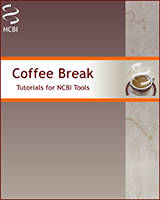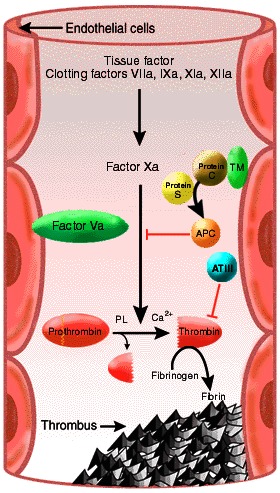From: Mutations and blood clots

NCBI Bookshelf. A service of the National Library of Medicine, National Institutes of Health.

Key:
Black arrows = activation
Red arrows = inactivation
APC = activated protein C
TM = thrombomodulin, a protein bound to endothelial cell membranes to which protein C binds
PL = phospholipid
Ca2+ = calcium
Each reaction in the coagulation cascade involves the conversion of a
clotting factor precursor into an active protease by proteolysis, regulated
by cofactors and calcium. The end point is the generation of enough
thrombin to catalyze the formation of fibrin, which then polymerizes and
crosslinks to form a clot. Under pathological conditions, the mutation in
factor V renders it resistant to inactivation by APC. Hence mutated
factor V pushes the cascade towards excessive blood clot formation.
Mutations in the upstream region of the prothrombin gene result in
increased levels of prothrombin in the blood, again encouraging the
formation of a thrombus.
Protein C, protein S and antithrombin III all have anti-coagulant action.
Deficiencies of proteins C and S usually result in a syndrome of
recurrent venous thrombosis and pulmonary embolism. Deficiency of antithrombin III is usually
mild.
From: Mutations and blood clots

NCBI Bookshelf. A service of the National Library of Medicine, National Institutes of Health.